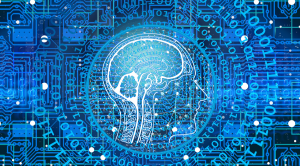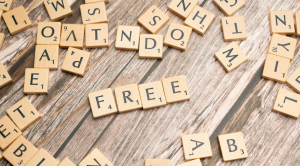What is OPSEC and why do you need it?
What is OPSEC?
OPSEC, short for Operational Security, represents a series of measures adopted by the US military to prevent the compromise of information related to their operations. These principles have become an important tool, not only in the military but also in the private sector, where organizations apply them to identify and remediate weaknesses in data processing. Whether.
During OPSEC implementation, security management professionals evaluate every aspect of business operations from the perspective of a potential attacker. They analyze everything from employee behavior to tracking social media activities, to understand how attackers can exploit vulnerabilities in workflows, activities, and as in your organization's software and hardware.
Why is OPSEC so important?
OPSEC's goal is to guide IT managers to think from the attacker's perspective, opening up the ability to autonomously identify weaknesses and reduce the risk of insider threats and attacks. cyber, espionage and other potential risks to their operations. Not implementing enough OPSEC can be costly: according to IBM's security department, the average data breach can cost up to $4.2 million.
At the individual level, OPSEC helps make you a more difficult target for cybercrime, such as fraud or identity theft. Every time you sign up for a service, install an app, share a comment on social media, or browse the Internet, you leave behind traces of personal data that attackers can use to create a profile. comprehensive profile. OPSEC can play an important role in solving these problems and keeping your data safe.
What are the four steps in OPSEC?
1. Identify important information
The personal information you want to keep private usually involves your important details. In the world of digital conversation, what matters is primarily content and metadata. Content is what is actually being chatted, while metadata describes information related to it, including chat participants, time, duration, and frequency of the chats.
Keeping content hidden is relatively easy, but protecting metadata remains a challenge. Apps like Signal promise not to store metadata, however, to ensure complete safety, you will probably need to manage your OTR server yourself (a task that is not easy and brings subject to individual risks).
2. Analyze threats
To keep your personal data out of sight, your exposure to risks and vulnerabilities will depend largely on the target audience. If you simply hide information from your neighbor or supervisor, your risks and downsides will be different than if you were facing a strong state.
From there, you can develop profiles for each specific threat. You can look at the resources they have available and find out what goals they are pursuing. This process provides enough information to ask important questions for the next phase of your personal security strategy.
3. Gap analysis
The question "Where can they attack?" poses a major challenge in OPSEC implementation, as vulnerabilities can appear anywhere. Step three of OPSEC is also the most difficult part because you need to trust the device, the operating system, the applications, and any installed programs. Backdoors can give intelligence agencies access to your data, and careless programming can leak information without your knowledge.
Vulnerabilities can also exist in the chain of communication or with the people you are chatting with. This poses great difficulties because you may not know what system is operating between you and your chat partner.
Your chat partner may not be as motivated to keep information private as you are. Maybe they live in a less repressive country, or they don't care as much about privacy as you do.
It is essential to integrate chat partner OPSEC into your OPSEC model, even if this is difficult and uncertain. There are many ways to minimize vulnerability, such as keeping your distance from your conversation partner by only revealing necessary information about yourself.
Unfortunately, the most difficult and complex vulnerabilities are often beyond the capabilities of the technology. An attacker can use social engineering to simulate a trusted person or government official. They can also use physical means such as swapping SIMs, reading ATM cards, and providing compromised Wi-Fi hotspots.
4. Risk assessment
Which vulnerabilities are most likely to occur? Your list of possible vulnerabilities will become very long, but not all threats are of equal importance. Some may be completely unrelated.
In this step, combine step 2 with step 3 to identify threats and evaluate how they can take advantage of your vulnerabilities.
Threats could include a sophisticated hacker or someone sharing your home. Each problem requires a different solution. For example, a password written on a piece of paper may pose a low risk if discovered by a hacker, but a high risk if a roommate can find it.
Eliminate unnecessary threats from the list, then determine the risk level of the rest: high, medium, or low.
Restrict device access and implement least privileged access
Many businesses operate on a need to have strict controls on access and sharing of information. Therefore, granting access to the database only occurs if the employee's or contractor's work requires such access.
By limiting people's access to different types of information, businesses reduce their risk of cyberattacks. This not only keeps important data effectively protected, but also enhances the security of information systems, while meeting the right level of regulation and protecting the privacy of customers and partners. business cooperation.
Ensures dual control
Many businesses set up two separate working groups, one specializing in network management and another specializing in cybersecurity. This way, a higher level of security is guaranteed because each team focuses only on managing and protecting its own products. This approach also helps minimize the risk of human error, as each specialist team operates independently, reducing the likelihood of errors that can occur when people have to take care of many different tasks.
Implement automation
Although people are generally trustworthy, they often have difficulty avoiding mistakes. Therefore, many companies are adopting automation to minimize the possibility of errors and human errors. Automation systems can be programmed to monitor suspicious activities, record activity details, and automatically generate real-time reports. This not only improves process reliability, but also provides the opportunity to detect and fix problems as they occur.
Provide employees with the minimum necessary access to network devices
Similar to restricting access to devices and implementing access with the lowest possible privileges, granting employees only the minimum access necessary to control network devices will reduce the risk. chance of security breach. This ensures that each user has access to only the parts necessary to do their job, preventing unnecessary access and reducing risks from cybersecurity threats.










